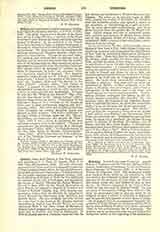

Dubourg, LOUIS-GUILLAUME-VALENTIN, second Bishop of Louisiana and the Floridas, Bishop of Montauban. Archbishop of Besancon, b. at Cap Francois, Santo Domingo, February 16, 1766; d. at Besancon, France, December 12, 1833. His theological studies were made at Paris, where he was ordained in 1788 and entered the Company of Saint Sulpice. He was superior of the seminary of Issy when the French Revolution broke out, and retired at first to Bordeaux. In 1794 he emigrated to the United States where he was welcomed by Bishop Carroll. He was president of Georgetown College from 1796 to 1799. After an unsuccessful trip to Havana where he attempted to open a school, he returned to Baltimore and became the first superior of Saint Mary’s College.
On August 18, 1812, he was appointed Apostolic Administrator of the Diocese of Louisiana and the Floridas to succeed Bishop Penalver y Cardenas promoted (1801) to the archiepiscopal See of Guatemala. The position was by no means an easy one and Father Dubourg was forced, at the beginning of his administration to take up his residence outside New Orleans. However, he gradually overcame his opponents. On January 23, 1815, on the threshold of the New Orleans cathedral, he bestowed on General Jackson the laurels of victory.
After settling in a satisfactory way the affairs of the diocese Father Dubourg proceeded to Rome where he was consecrated Bishop of Louisiana and the Floridas, September 24, 1815. He returned to America in 1817 and took up his residence in St. Louis where he founded a theological seminary and college at “The Barrens”. He also founded the St. Louis Latin Academy which developed into the present well-known St. Louis University. The Religious of the Sacred Heart simultaneously opened their first American convent, St. Charles’s Academy (1818), and soon after a second one at Florissant. These institutions gave a great impulse to religion in what was then known as Upper Louisiana. The bishop visited yearly the southern part of his diocese, and when Bishop Rosati was appointed his coadjutor, New Orleans became again his residence. In 1826 Bishop Dubourg went again to Europe. He was a brilliant and learned man, but was reluctant to enforce his authority against the cathedral trustees who continually opposed him; therefore he tendered his resignation of the See of New Orleans (November, 1826), thinking that another incumbent would be more successful.
He was not, however, allowed to live in retirement, but was transferred, October 2, 1826, to the Diocese of Montauban; then on February 15, 1833, he was promoted to the archiepiscopal See of Besancon. Archbishop Dubourg was one of the first patrons and beneficiaries of the Society for the Propagation of the Faith, but was not, as has been said, its founder. This society was organized at a meeting held at Lyons by the Abbé Inglesi, Bishop Dubourg’s vicar-general, but the chief rôle in its creation is due to a pious woman of Lyons, Pauline-Marie Jaricot (q.v.).
CELESTIN M. CHAMBON

